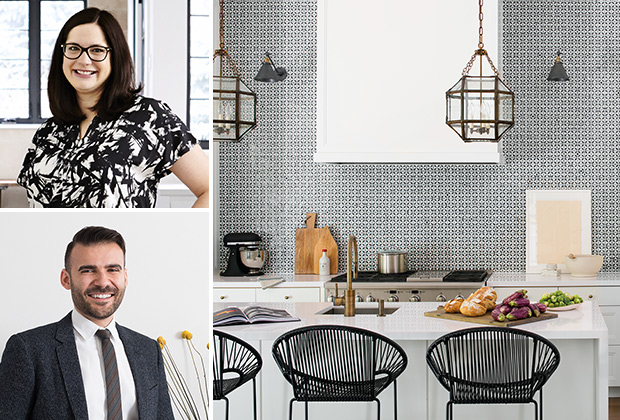Decorating & Design
October 27, 2016
Now Or Never: Kitchens With Open Shelves

Get designers’ takes on current trends in our online series, Now or Never.
We’ve seen some stunning kitchens with just open shelves, but is it practical? We asked two designers to share their advice on how to make a kitchen with no upper cabinets a regret-free design decision (especially for those who aren’t super organized).

Olivia Botrie, Dart Studio
“I always prefer having no upper cabinets because it keeps the kitchen feeling open and airy. People say there is no such thing as too much storage, but I think that four walls full of cabinets can be overwhelming. By concentrating your storage in specific areas you can create a cleaner look in the kitchen while still making sure there is enough storage for necessities. When you have too many cabinets, you just end up filling them with junk!
If you pack enough storage on other walls, it isn’t necessary to have a full bank of upper cabinets on the sink or stove walls. This can be accomplished by focusing all your storage in one area. I like to create a full-height storage wall including the fridge, pantry, microwave, and wall oven so that I can eliminate upper cabinetry on the other walls. No upper cabinets means more opportunities for windows, which is always a good thing. When there are cabinets beside windows, some of the light gets blocked by the uppers.
If you aren’t able to add windows, you could install artwork above the cabinets which adds interest, color and pattern to a neutral kitchen. By necessity, there are many hard surfaces in a kitchen (countertops, cabinets, backsplash, appliances etc.) and freeing up wall space enables you to introduce art, which really softens the look.”

Mazen El-Abdallah, Mazen Studio
“It’s no longer a given that every kitchen needs to have upper cabinets, after all, today’s kitchens are where we entertain. An open kitchen allows wall space for art, or groupings of objects and cookbooks that are attractive to look at.
My favorite kitchens include large, light-filled farmhouse kitchens without uppers, as well as tiny windowless urban kitchens with paneled cabinetry that extends to the ceilings. When I design more open kitchens that feel like an extension of the living space, I include a separate pantry adjacent to the kitchen. These spaces have floor–to-ceiling shelving, and a counter surface to ensure that you don’t lose prep areas.
In smaller kitchens where every inch counts, beautiful cabinetry can provide architectural interest and turn a small space into a jewel box. I like to extend the cabinets to the ceiling to accentuate the height of the room, and may add a cornice detail to integrate them into the architecture. To ensure that the space doesn’t feel too closed in, you can use glass doors for some of the cabinets and extend the backsplash tile into the interior of the upper cabinets.
In a more modern environment, one row of horizontal upper cabinets mounted on a wall can draw the eye around the room, without the visual weight of a full wall of cabinets, while providing storage. I like to think of these cabinets as pieces of furniture, and may design them in a contrasting, or more precious material.”
Interior shot and Mazen El-Abdallah portrait, Alex Lukey, Olivia Botrie portait, Angus Fergusson
House & Home Kitchens & Baths 2016 special issue
Samantha Farjo

